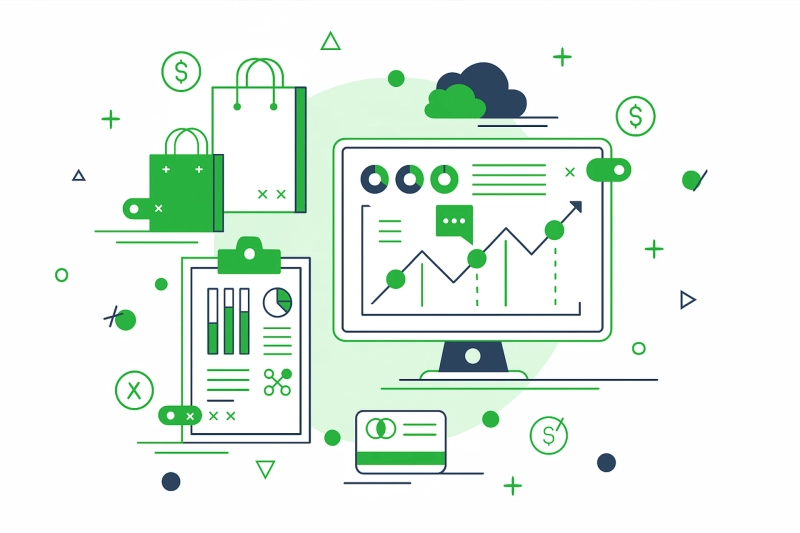In 2025, customers don’t just expect personalization—they demand it. Whether shopping online or walking into a store, they want brands to recognize their preferences, anticipate their needs, and offer relevant products at the right time. The era of generic, one-size-fits-all retail experiences is over.
At the heart of this transformation is Artificial Intelligence (AI). With its ability to process vast datasets, detect patterns, and act in real time, AI has become a powerful tool for retailers looking to build deeper connections with customers. But what does AI-powered retail personalization really look like? And how can businesses implement it effectively?
Let’s explore how AI is reshaping the retail experience, what benefits it brings, and where the challenges lie.
What Is Retail Personalization?
Retail personalization is the process of tailoring products, content, offers, and experiences to individual customers based on their behavior, preferences, and demographics. While the idea isn’t new, what’s changed is the scale and speed at which it can be done—thanks to AI.
Using AI, retailers can move beyond basic personalization (like “Hi [Name]”) to more intelligent interactions such as:
- Recommending products based on real-time browsing behavior
- Sending location-aware push notifications
- Personalizing pricing, discounts, and bundling offers
- Dynamically updating website content for each visitor
- Anticipating needs based on life events or previous purchases
This level of personalization requires data, smart algorithms, and real-time decision-making—things AI excels at.
Key AI Technologies Behind Personalization
Here are the core AI technologies enabling next-gen retail personalization:
1. Machine Learning (ML)
ML models can analyze customer data—such as purchase history, product views, and abandoned carts—to generate predictive recommendations. These models improve over time as more data becomes available, continuously refining the customer experience.
2. Natural Language Processing (NLP)
NLP allows chatbots and voice assistants to engage customers in natural, human-like conversations. Retailers use NLP to power intelligent support, in-app search, and virtual styling advice—all personalized to the user’s preferences and tone.
3. Computer Vision
In physical stores, AI-driven cameras can identify shopper demographics, monitor product interest, and even analyze facial expressions to assess satisfaction levels. Combined with in-store behavior data, this enables highly contextual personalization.
4. Customer Data Platforms (CDPs)
AI-integrated CDPs consolidate data from different channels—e-commerce, apps, POS, email, social media—and unify it under a single customer profile. This 360-degree view is the foundation of consistent and relevant personalization.
Benefits of AI-Powered Retail Personalization
1. Higher Conversions
Personalized product suggestions, reminders, and limited-time offers have proven to increase average order value (AOV) and cart conversion rates. Customers are more likely to buy when the shopping journey feels tailored to them.
2. Improved Customer Loyalty
When brands remember preferences and deliver value, customers are more likely to return. Personalized loyalty programs, birthday discounts, or exclusive recommendations can deepen emotional loyalty.
3. Reduced Marketing Waste
AI helps marketers deliver the right message to the right person at the right time—minimizing irrelevant promotions and maximizing ROI.
4. Better Inventory and Pricing Management
By analyzing customer preferences and real-time demand, AI can help retailers optimize stock levels, create dynamic pricing models, and reduce overstock or markdown losses.
Real-World Examples
- Amazon: From “Customers also bought…” to dynamic homepages and 1-click reorder buttons, Amazon’s entire UX is driven by AI personalization.
- Sephora: Uses AI to offer beauty advice based on skin tone and previous purchases, while blending online and in-store personalization through loyalty accounts.
- Nike: Offers personalized product recommendations and styling options through its app, and customizes offers based on fitness goals and user engagement.
Challenges to Watch Out For
1. Data Privacy and Consent
With AI collecting and using personal data, privacy becomes a major concern. Brands must comply with regulations (like GDPR and India’s DPDP Act), and offer transparent opt-ins, data controls, and clear value exchanges.
2. Data Silos
Disconnected systems can make personalization inconsistent. If your CRM doesn’t talk to your e-commerce platform or marketing tools, customer experiences may feel fragmented.
3. Over-Personalization
Getting too personal too fast can feel invasive. For instance, recommending a product a customer just viewed on a competitor’s site might raise eyebrows. Striking the right balance between helpful and creepy is critical.
4. Bias in AI Models
If training data is biased, AI outputs will be too. Retailers need to audit their models regularly to ensure fair, inclusive experiences for all customers.
Best Practices for Implementing AI in Retail Personalization
- Start with clean, unified data
- Focus on value-driven personalization (not just sales-driven)
- Test and measure personalization strategies regularly
- Involve cross-functional teams—IT, marketing, product, and support
- Be transparent with customers about how their data is used
Final Thoughts
AI is not just improving retail personalization—it’s redefining it. As algorithms get smarter and data becomes more accessible, the gap between generic and hyper-personalized retail will only grow.
Brands that embrace AI early, use it responsibly, and focus on delivering real value will be the ones that stand out in a crowded market. The future of retail is personalized—and powered by intelligence.
At Yodaplus, we help retail businesses harness the power of Artificial Intelligence solutions to deliver deeply personalized experiences. From recommendation engines and smart segmentation to data pipelines and real-time analytics, our tools are built to scale with your business and delight your customers.
If you're ready to elevate your retail personalization strategy, let’s talk.


